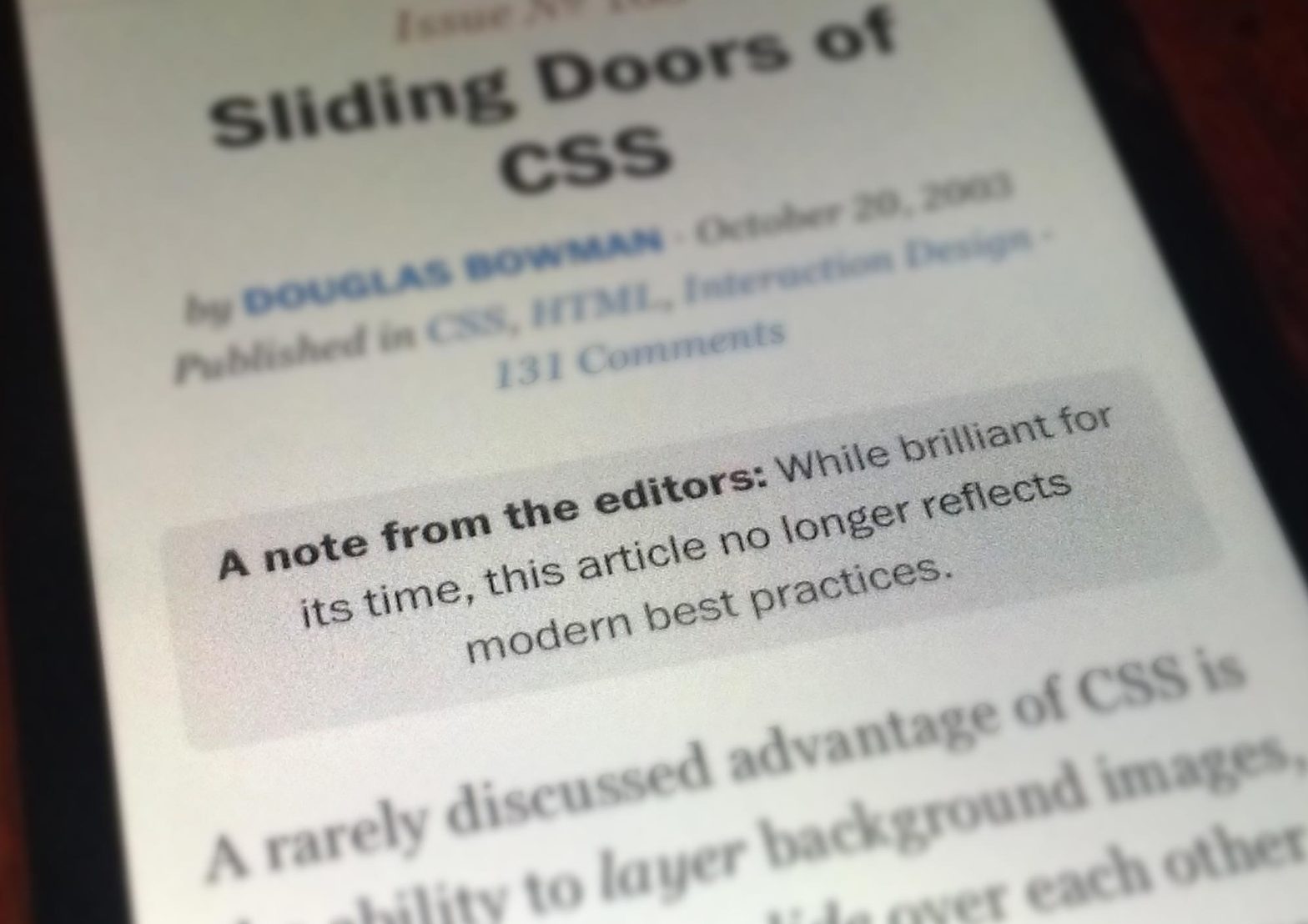Occasionally I look at the theme for one of the first WordPress sites I developed. I look at my early PHP, my early CSS, my early JavaScript & my HTML about ten years into my career.
The HTML has at least lost its font tags and table based layouts but my overall reaction is to wish I could curl up and hide.


